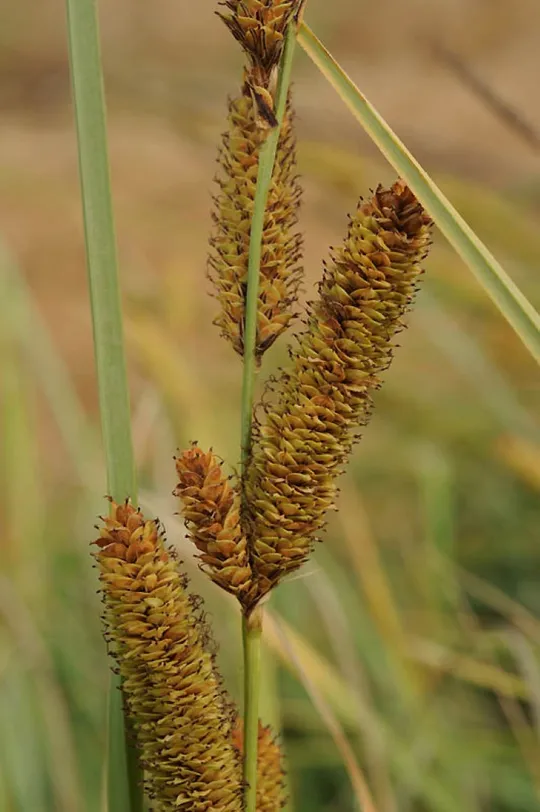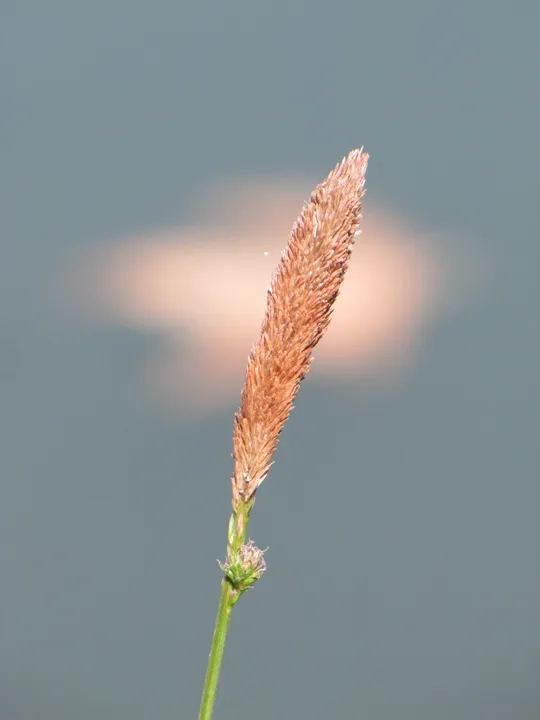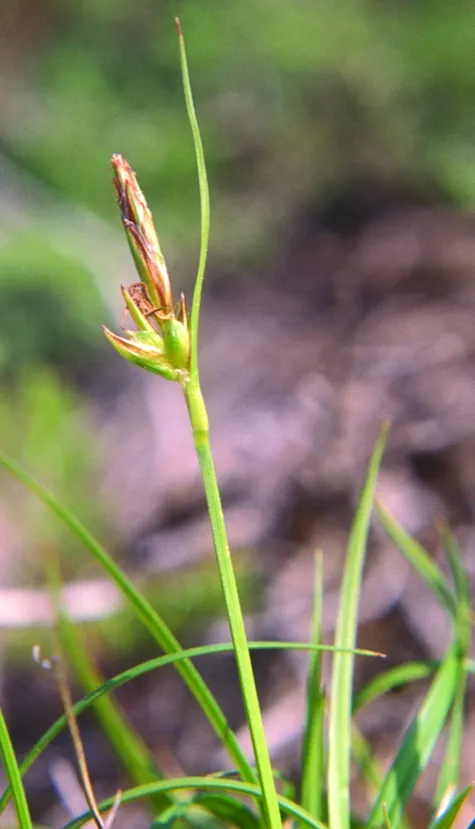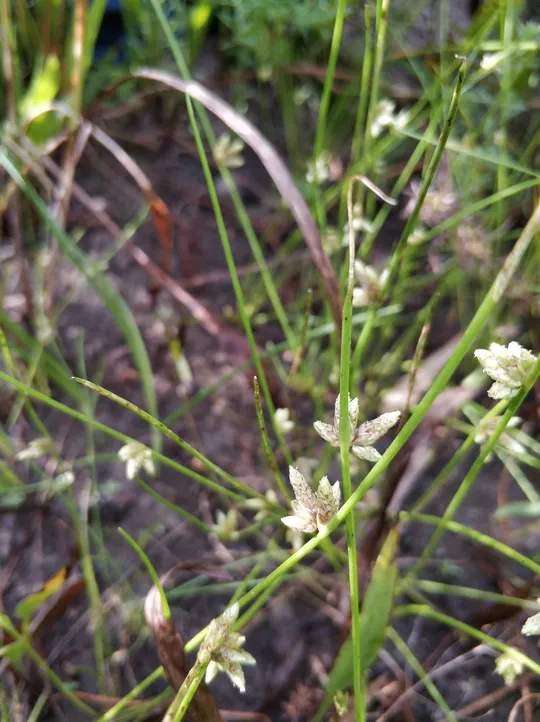Bastard Cyperus, Cypress-like Sedge
Carex pseudocyperus
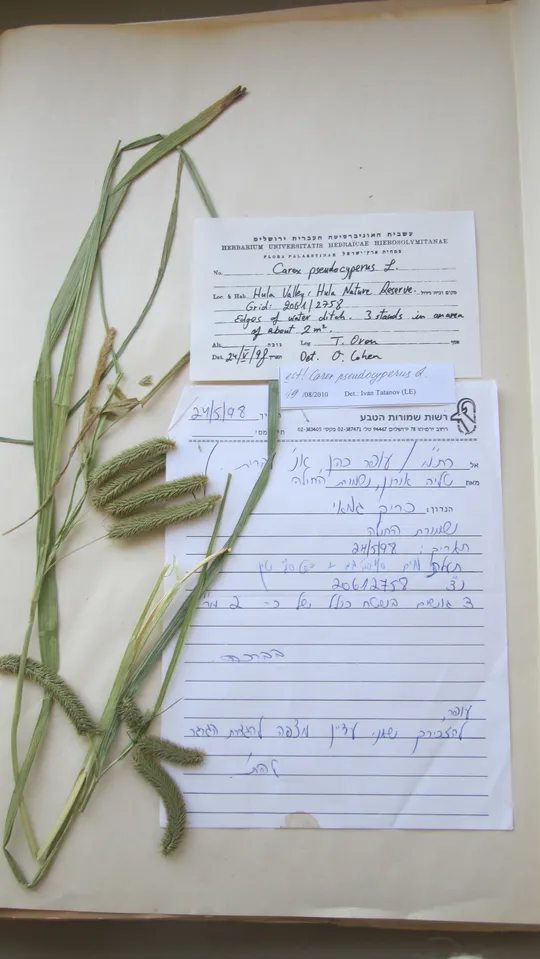
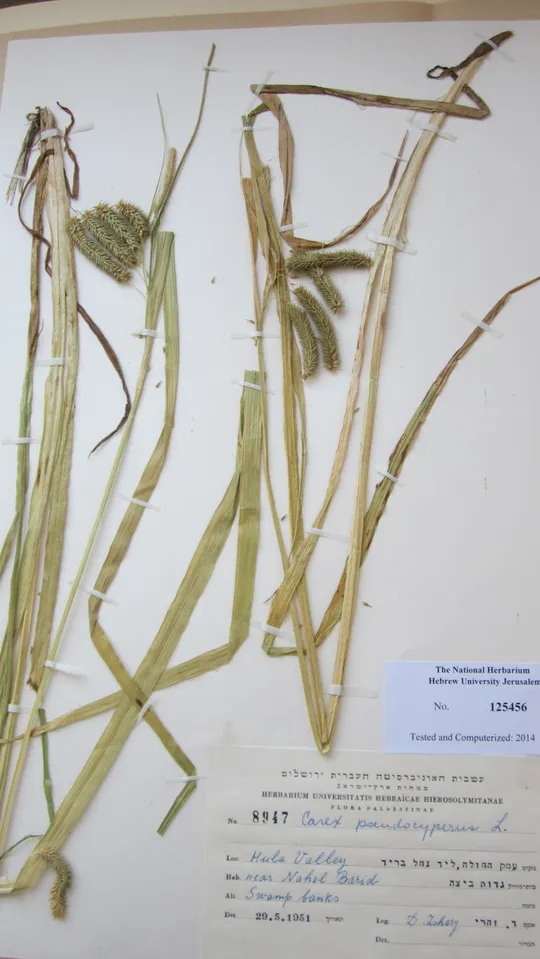
Carex pseudocyperus has been found so far at only two sites in Israel.
It is unmistakably extinct from one site and suspected of being extinct from
the second. It was collected in 1952 in the Hula Valley in the Enan Stream,
at the edge of the former Hula Marsh. In the Sharon, C. pseudocyperus
was collected in 1932 from the Batih Pond, and this is the only location the plant was
known from in the region. In 1980, the plant was collected from the Batih Pond again, but
all our efforts to locate it again in the 1994-1996 rare plant survey failed.
Marshes
and shaded riverbanks (because of its rarity there is no information on the
species in Israel). In Turkey and Europe, it grows at the edge of lakes, pools,
ditches and swamps, from sea level up to altitudes of 1500 meters.
The genus Carex numbers 800 species,
most of which grow in badly drained bodies of water. Eighty-six species grow in
Turkey and 99 in the Middle East, data that indicate the species richness of
the genus in our region. There are 12 species in Israel, most of them
associated with bodies of water – rivers, marshes and the edges of ponds, although
a few species also grow in woodland and scrubland and one species is from the
desert – C. pachystylis. The genera Carex and Cyperus are
the two most common genera of the Cyperaceae in bodies of water and the distinction between them is difficult. In the genus Carex,
unlike the genus Cyperus, the spikelet pales are not arranged in two
overlapping parallel columns. In addition, the spikelets are arranged in
cylindrical inflorescences, unlike are the flattened inflorescences in the
species of the genus Cyperus. In general, the genus Carex is a
Northern genus adapted to low temperatures, while the genus Cyperus is a
tropical genus adapted to equatorial tropical and subtropical climates.
The genus Carex is divided into two groups
of species: in one group the male and female flowers are found on the same
inflorescence (e.g., in Israel: C. otrubae and C. divisa); and in
one group the male and female flowers are found in separate inflorescences. C.
pseudocyperus belongs to the second group. The inflorescence of C. pseudocyperus
is unique, with flowers at right angles to the spikelet axis and spread apart, unlike
those of C. acutiformis and C. distans.
•
Carex
pseudocyperus once grew at a single site in the Hula, and is
now extinct. It grew, at least until 1980, in the Sharon at the Batih
Pond and there is concern that it is extinct there
as well. These are the only two known sites that were known in Israel.
• The Batih Pond and Enan Stream are nature reserves, and if C. pseudocyperus will
be reintroduced to them, the species will be protected.
Carex pseudocyperus should be reintroduced to the Enan
Stream and the Batih Pond and the site should be fenced and signposted. Unwanted
grazing should be prevented and the water system should be managed, to guarantee
the existence of the reintroduced populations and the survival of other red
species that still grow in these areas.
Carex pseudocyperus has a broad distribution: it grows in most European
countries, North Africa, southern Russia and Siberia, the Caucasus, Central and
Eastern Asia, North America and New Zealand. In the Middle East, it grows only
in northern Iran, the Syria-Lebanon coast and some regions in Turkey. It is
absent from Jordan and northern Iraq. C. pseudocyperus is a northern
species and Israel is the southernmost limit of its range.
Carex pseudocyperus is a perennial grass of the Cyperaceae family, which was very rare in Israel
and is now probably extinct. It previously grew on two sites in two regions: in
the Hula, where it is certainly extinct, and in the Sharon, where also it is probably
extinct. It is a northern species characteristic of water bodies in temperate
areas, whose global distribution is extensive, and Israel is its southernmost
limit.
פליטמן, ע. 1964, הצומח של נחלי החוף. עבודת גמר לתואר M.Sc., המחלקה לבוטניקה, האוניברסיטה העברית בירושלים.
Current Occupancy Map
| 1000 squre meter pixel | 5000 squre meter pixel | 10000 squre meter pixel | |
|---|---|---|---|
| number of observations | 0 | 0 | 0 |
| in total pixels | 0 | 0 | 0 |
| Family | Cyperaceae |
| Classification | On the endangered species list |
| Ecosystem | Mediterranean humid |
| Chorotype | Euro – Siberian (Mediterranean, Irano – Turanian) |
| Conservation Site | Batih Pond in the Sharon, Enan Stream in Hula |
| Rarity |
1
4
6
|
|---|---|
| Vulnerability |
0
3
4
|
| Attractiveness |
0
0
4
|
| Endemism |
0
0
4
|
| Red number |
1
4.2
10
|
| Peripherality | N |
| IUCN category | DD EW EX LC CR EN VU NT |
| Threat Definition according to the red book | Endangered |
 Based on:
Based on:
